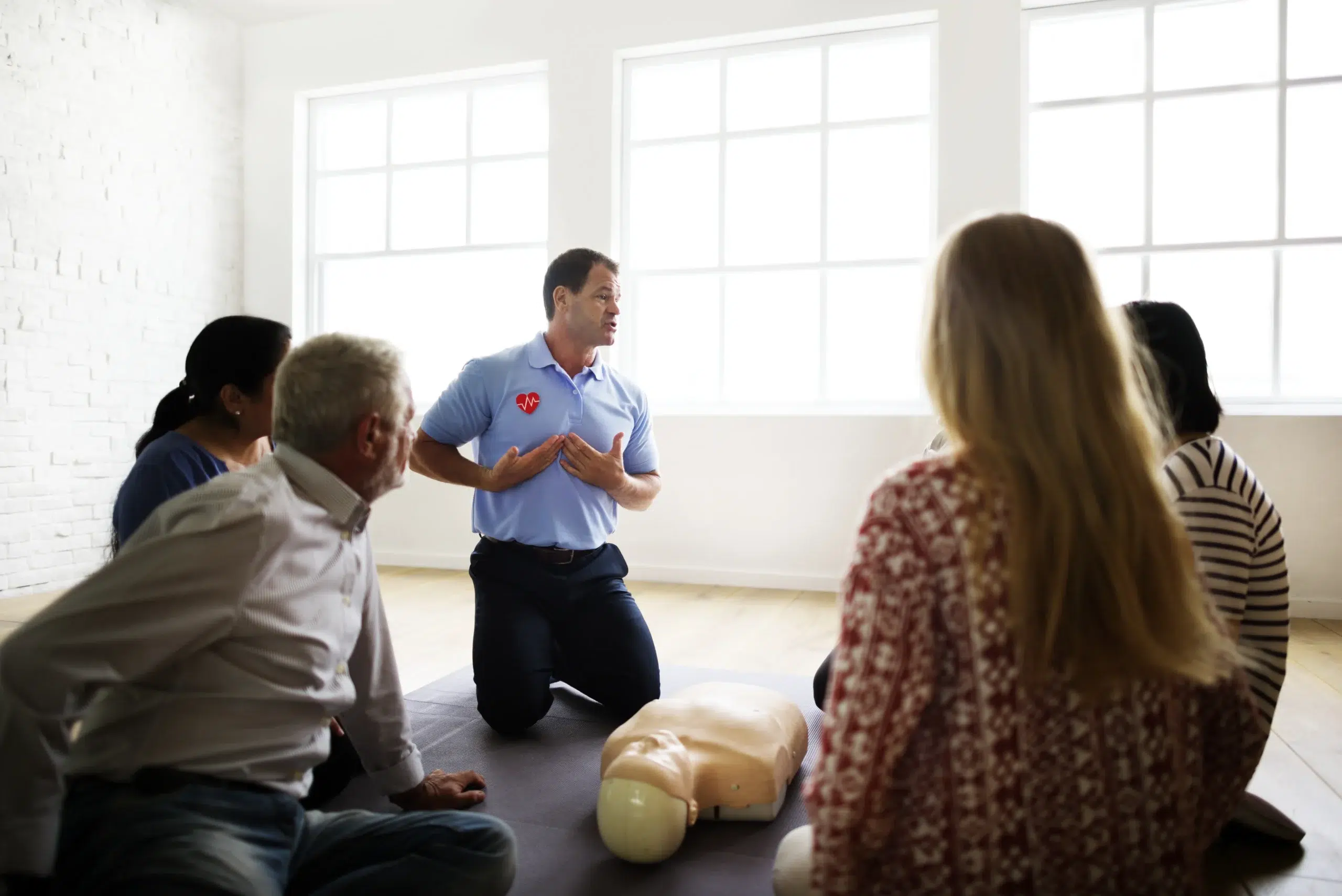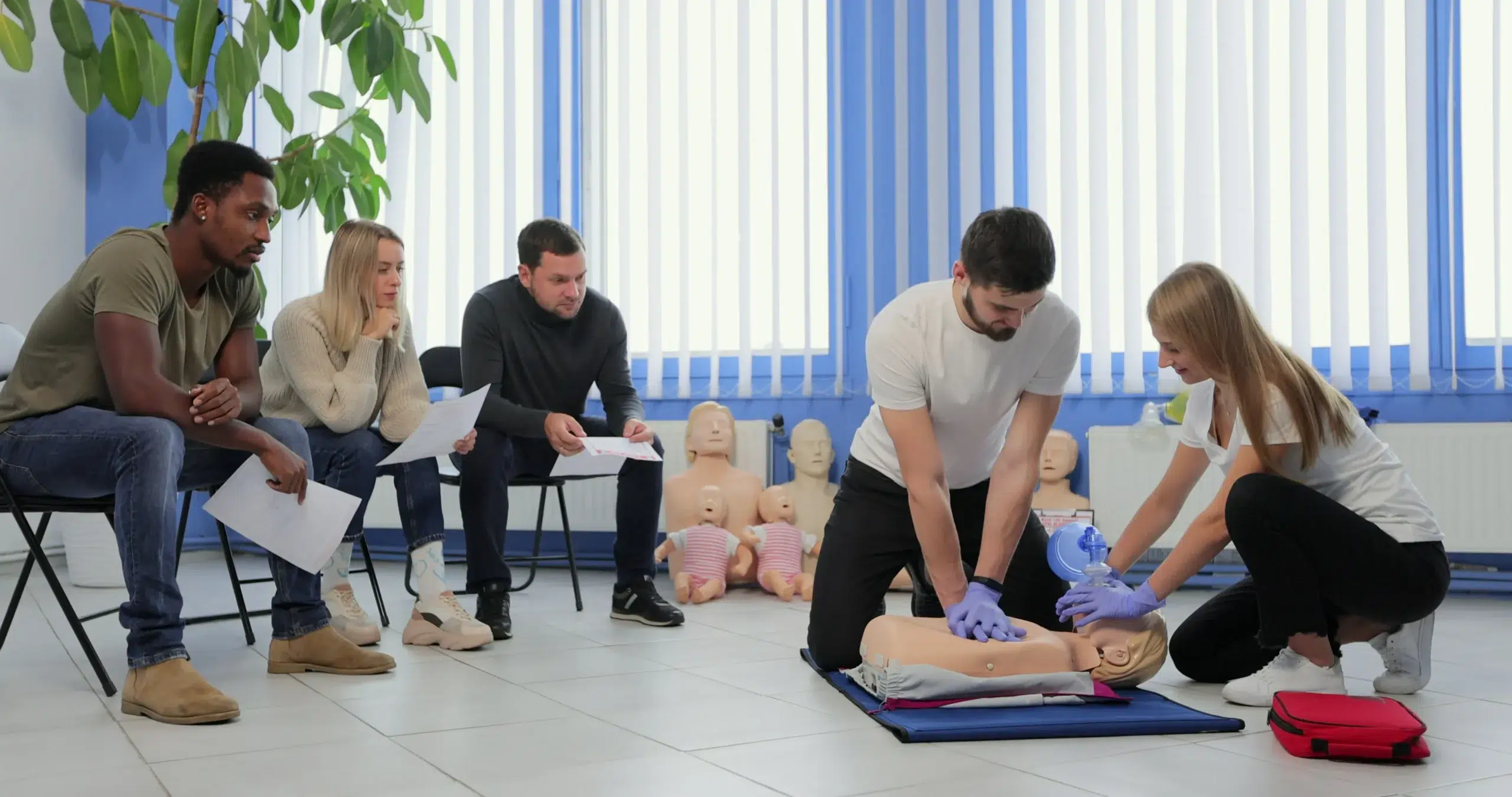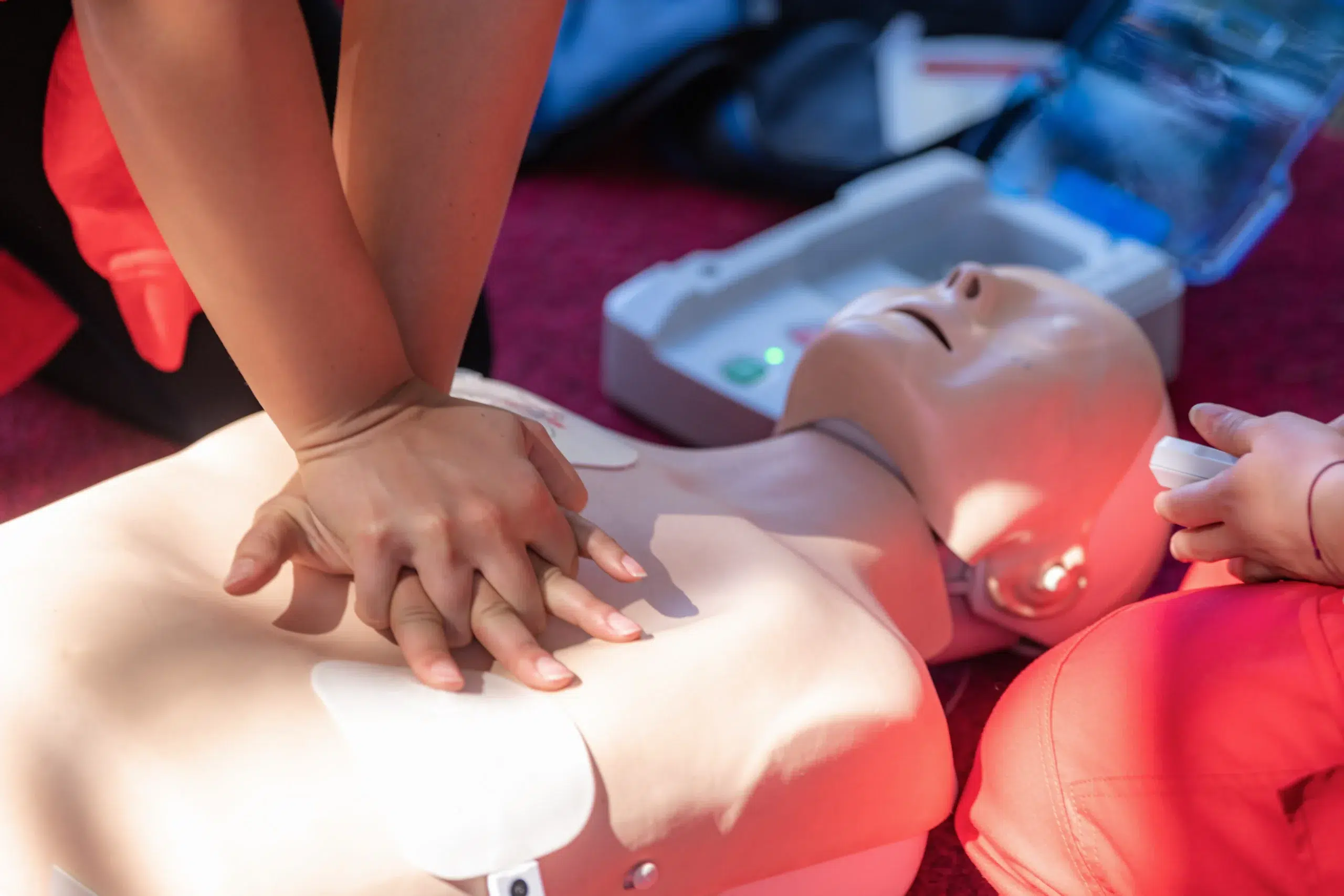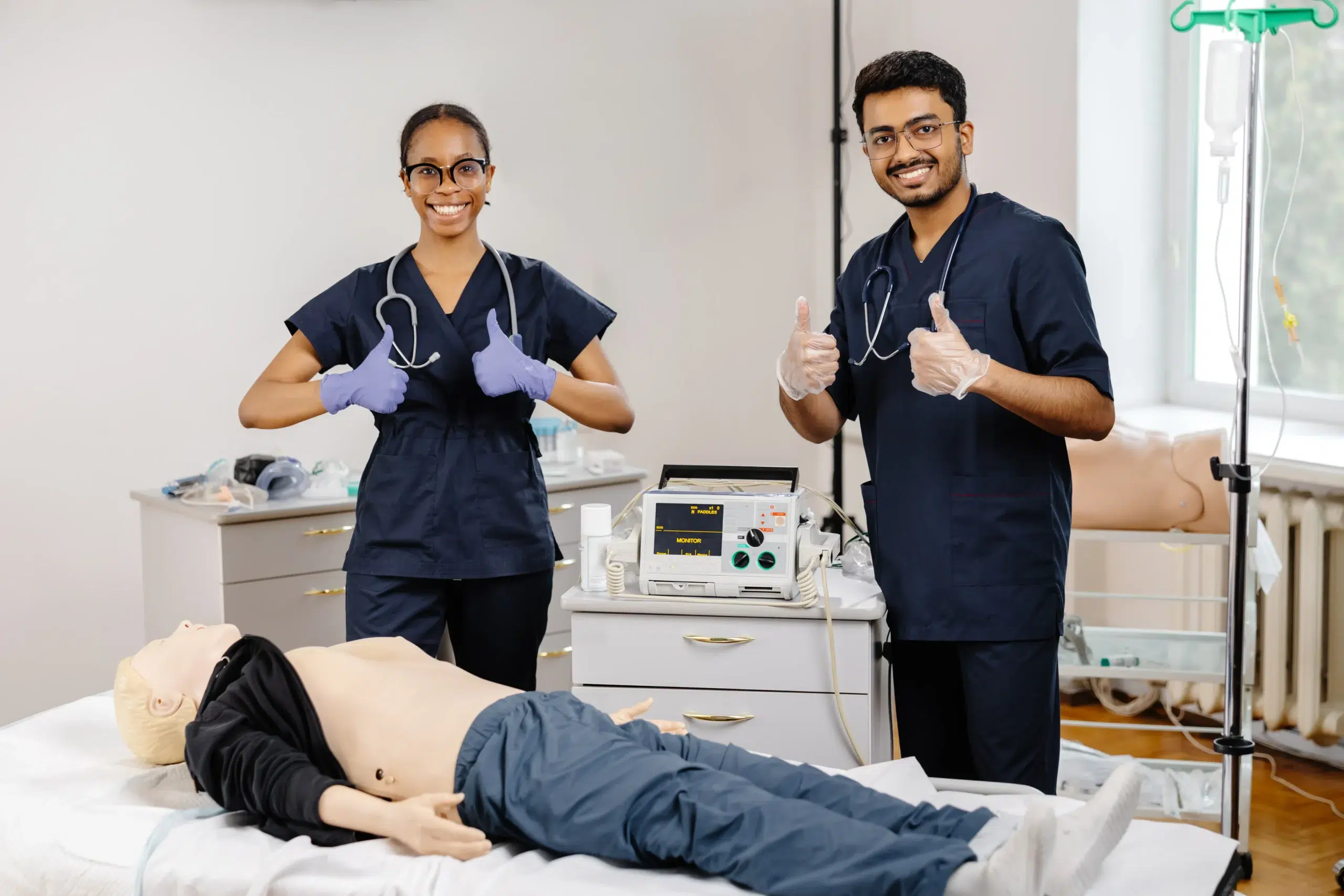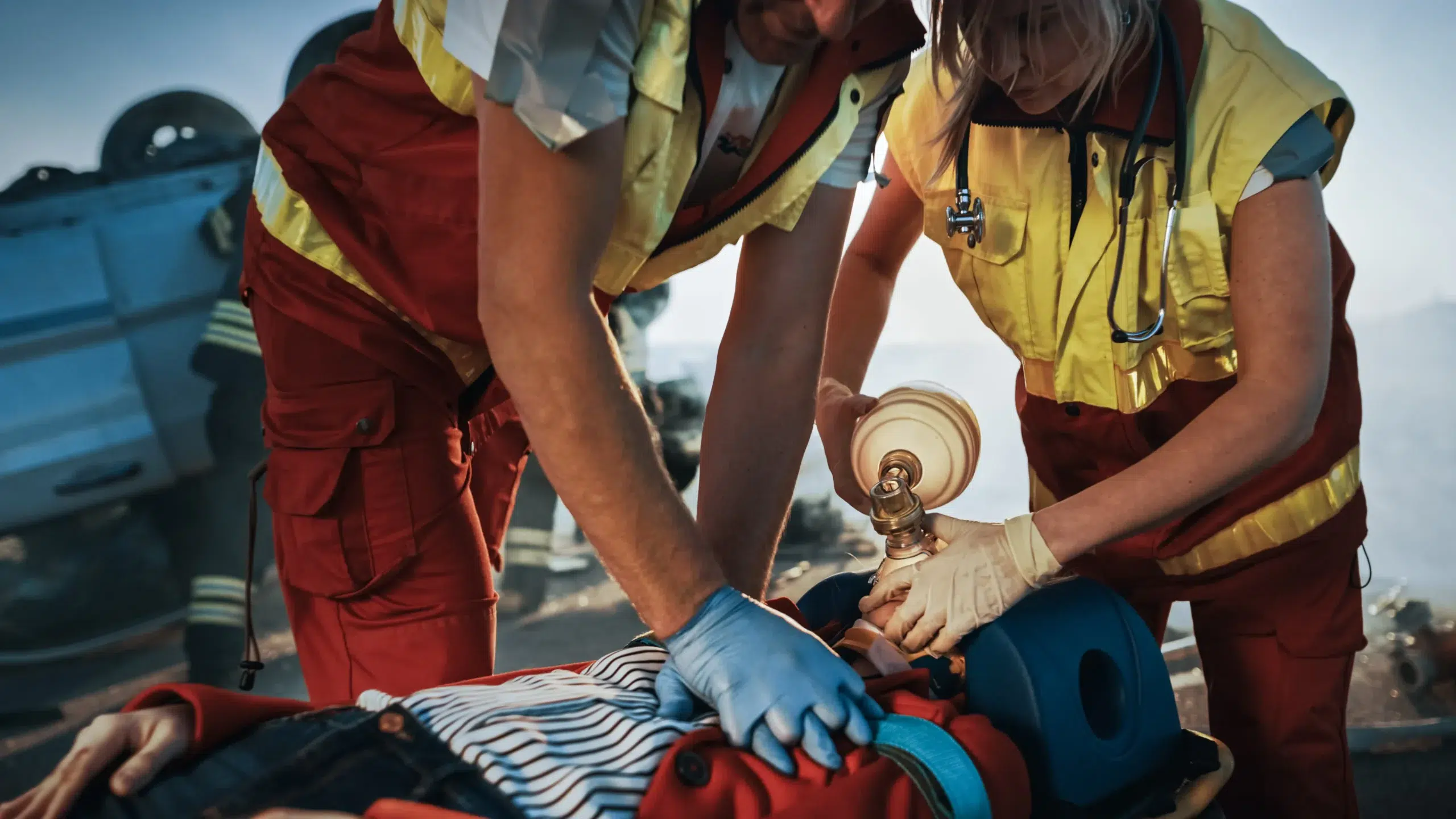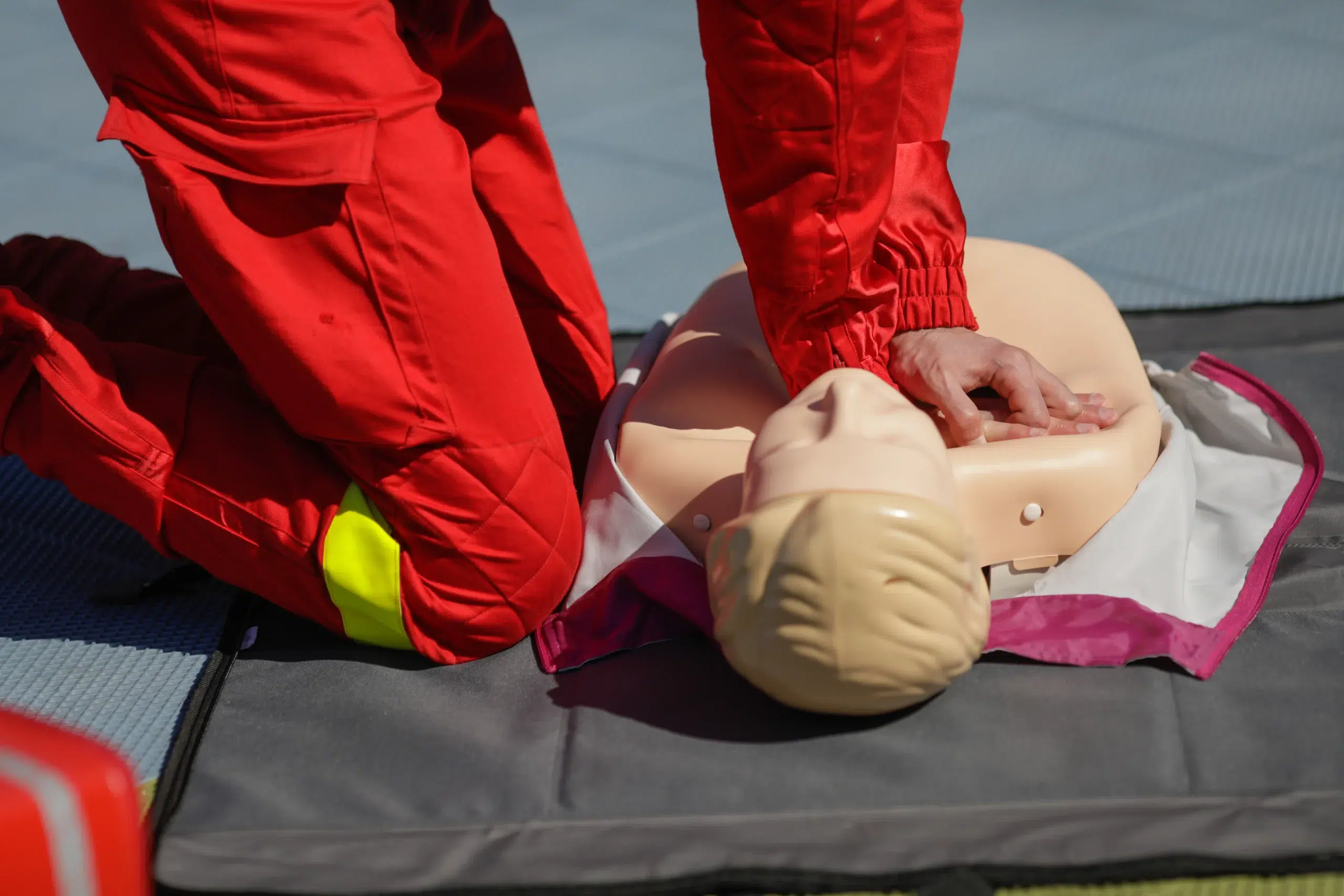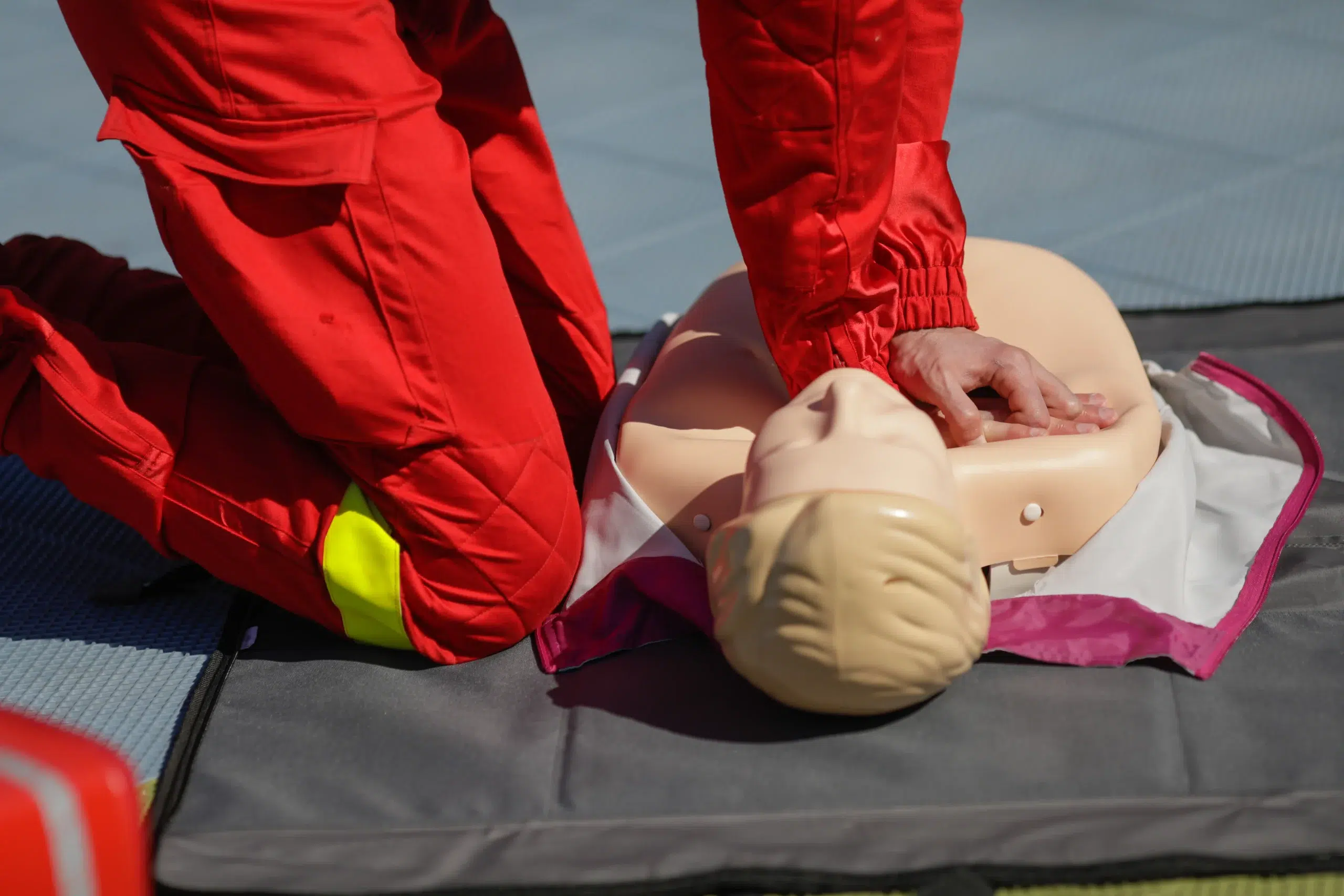Have you ever considered the impact you could have in a medical emergency? Learning CPR can transform you into a potential lifesaver. If you’re in San Jose and searching for CPR classes, this guide is your starting point. We’ll explore the world of CPR training in San Jose, covering everything from the basics of CPR to finding the perfect class for you. We’ll discuss the different types of CPR classes available, including options for adults, children, infants, and combined CPR/First Aid/AED training. We’ll also highlight top CPR training providers in San Jose, explain what happens during a typical class, outline certification procedures, discuss costs, and guide you in choosing the right class based on your needs and schedule. Plus, we’ll debunk some common CPR myths and give you a preview of the essential skills you’ll learn. CPR classes in San Jose offer an incredible opportunity to empower yourself and potentially save a life.
Key Takeaways
- CPR empowers you to save lives: It’s a skill for everyone, regardless of background. Find a course that fits your schedule and learn how to respond effectively to cardiac emergencies.
- Find the right CPR class for your needs: Consider factors like the instructor’s experience, the course content (adult, child, infant CPR, first aid, AED training), and the class format (online, in-person, or blended learning).
- Debunking CPR myths: Anyone can perform CPR in an emergency. Formal certification is helpful but not required to act when someone needs help. CPR increases the chance of survival, but it’s not always a guarantee.
What is CPR? And Why is it Important?
Cardiopulmonary resuscitation (CPR) is a life-saving technique used when someone’s heart stops beating. It combines chest compressions and rescue breaths to keep blood flowing to the brain and other vital organs until professional help arrives. One of the most incredible things about CPR is that anyone can perform it, regardless of medical background. This makes it a skill everyone can and should learn. CPR certification courses are readily available to equip you with this life-saving skill.
CPR can quite literally double or even triple a person’s chance of survival from cardiac arrest. Think about that impact! Immediate CPR significantly increases the likelihood of a positive outcome, which is why widespread training and awareness are so important. It’s not just for healthcare professionals; bystanders trained in CPR can make a real difference in those critical moments before emergency services arrive. Learning CPR empowers you to potentially save a life, providing essential support in emergencies. It’s a skill that equips you to act quickly and confidently when every second counts. You can find more information on the importance of CPR and debunking common myths at this helpful resource.
CPR Class Types in San Jose
CPR classes in San Jose cater to various needs and age groups. Whether you’re a parent, teacher, healthcare provider, or simply someone who wants to be prepared for emergencies, there’s a class for you. Let’s explore the different types available:
Adult CPR
Adult CPR classes focus on techniques for performing CPR on adults. You’ll learn how to recognize the signs of a cardiac arrest, deliver effective chest compressions, and provide rescue breaths. These CPR and First Aid classes equip you with the skills to respond confidently in emergencies. Many courses offer in-person and blended online/in-person options, making it easier to fit training into your schedule. Knowing adult CPR can be invaluable in various settings, from workplaces to social gatherings.
Child and Infant CPR
Child and infant CPR classes teach modified techniques specifically designed for younger individuals. Because children and infants have smaller bodies and airways, the CPR methods differ from those used for adults. These classes cover assessing a child or infant’s condition, delivering age-appropriate chest compressions and rescue breaths, and managing choking incidents. CPR Training Center offers child and infant CPR courses alongside other essential certifications like BLS, ACLS, PALS, and First Aid. Learning these specialized techniques is especially important for parents, caregivers, and anyone who works with children.
First Aid and AED Training
First Aid and AED training often complement CPR certification. First aid courses teach you how to respond to various medical emergencies, from minor cuts and burns to more serious injuries like fractures and allergic reactions. AED (Automated External Defibrillator) training teaches you how to use an AED to deliver a life-saving shock to someone experiencing sudden cardiac arrest. The Santa Clara County Fire Department offers CPR/AED training, including courses covering adult, child, and infant CPR, AED use, and choking assistance. These combined skills can significantly improve your ability to provide effective assistance in emergencies.
Combination Courses
For comprehensive training, combination courses cover multiple certifications, such as CPR, First Aid, and AED. These courses offer a streamlined approach to learning essential lifesaving skills. Safety Training Seminars provides AHA-certified courses in CPR, BLS, ACLS, and PALS, along with First Aid and EMSA certifications. Completing a combination course equips you with a broader skill set and prepares you to handle a wider range of emergencies. This option is particularly beneficial for healthcare professionals and those seeking comprehensive knowledge.
Top San Jose CPR Training Providers
Finding the right CPR training provider is crucial for a positive and effective learning experience. Here’s a rundown of some reputable options in San Jose:
Safety Training Seminars
Safety Training Seminars offers American Heart Association (AHA) certified courses in CPR, BLS, ACLS, and PALS, in addition to First Aid and EMSA certifications. They also provide several renewal options, including the RQI program for healthcare providers and renewal courses for certifications like BLS, ACLS, and PALS, making it easy to stay up-to-date. Their low price guarantee provides added value.
American Red Cross
The American Red Cross offers CPR and First Aid classes in San Jose. Taught by experts, their courses provide job-relevant skills that align with OSHA requirements. Choose from in-person classes or a blended online/in-person option. Red Cross certification is valid for two years.
Santa Clara County Fire Department
The Santa Clara County Fire Department (SCCFD) offers several CPR/AED training options: the AHA Heartsaver® CPR/AED Blended Learning Course, the AHA Heartsaver® CPR/AED In-Person Course, and a Hands-Only CPR/AED and Choking Relief Class. These courses equip participants with essential CPR skills and knowledge. Visit the SCCFD website for their current course schedule.
Local Hospitals and Medical Centers
Many local hospitals and medical centers in San Jose provide CPR training as part of their community outreach. These classes are typically led by experienced medical professionals and may include specialized training for healthcare providers. Contact hospitals directly or check their websites for information on their CPR training programs.
What Happens in a CPR Class?
CPR classes give you the skills to handle medical emergencies. Here’s what you can expect during your training:
Course Duration and Format
CPR classes blend online learning with hands-on practice. Expect to spend two to three hours on the online portion, learning essential concepts and procedures. This is followed by a shorter in-person skills session (about 30 minutes) to practice what you learned online. Safety Training Seminars offers various course formats, including convenient blended learning options, to accommodate your schedule. Certification typically lasts two years.
Hands-on Practice with Manikins
The in-person class focuses on hands-on learning. You’ll use training manikins to practice chest compressions, rescue breaths, and AED use. This practical experience builds confidence and helps you master the correct techniques. Some courses, like the AHA Heartsaver® CPR/AED Blended Learning Course, provide a CPR mask and gloves kit for realistic practice.
Written and Practical Exams
Most CPR classes include written and practical exams to assess your knowledge and skills. The written exam covers key concepts from the online portion, while the practical exam evaluates your CPR and AED skills. You’ll receive your certification upon completion of the class, valid for two years. Explore our CPR and First Aid courses for more details.
Get CPR Certified: Process and Validity
Obtaining Your CPR Certification
Getting your CPR certification is straightforward. Reputable organizations like the American Red Cross and Safety Training Seminars offer various CPR courses in San Jose. Many organizations provide a mix of in-person and blended learning options (online and in-person), letting you choose the format that best suits your schedule and learning style. All the training covers the core skills and knowledge needed to respond effectively in cardiac emergencies. Your CPR certification will typically be valid for two years.
Certification Renewal Requirements
CPR guidelines and best practices can change, so renewing your certification is essential to stay current. As your two-year certification period nears its end, sign up for a renewal course. These refresher courses reinforce your skills and introduce any updated procedures, ensuring you’re always prepared to provide effective assistance.
RQI Program for Healthcare Professionals
Healthcare providers have a unique option for maintaining their CPR skills: the Resuscitation Quality Improvement (RQI) program. Offered by the American Heart Association, the RQI program offers a flexible and convenient way to stay certified in essential life support skills, including Basic Life Support (BLS), Advanced Cardiovascular Life Support (ACLS), and Pediatric Advanced Life Support (PALS). The program focuses on frequent, low-dose practice and personalized feedback, helping medical professionals maintain a high level of competency and ensuring they are consistently ready to deliver the best possible care in critical situations.
CPR Class Costs in San Jose
CPR class costs in San Jose vary based on a few factors. The type of class (adult-only, child/infant, or all-inclusive), the format (online, in-person, or hybrid), and the certification level all affect the price. Generally, online CPR classes are more budget-friendly, but they might not meet all workplace requirements. Hybrid classes offer a balance of online learning and hands-on practice.
Average Pricing
You’ll find a range of prices for CPR certification in San Jose. Basic adult CPR classes can start as low as $50, while more comprehensive courses, including child and infant CPR, first aid, and AED training, can range from $75 to $125 or more. Investing in a quality CPR class is an investment in potentially life-saving skills.
Group Discounts and Promotions
Many CPR training providers in San Jose offer group discounts, which is helpful for certifying teams, friends, or family members. These discounts can make training more affordable. Contact providers directly or check their websites for current promotions. Safety Training Seminars offers a low price guarantee and often runs promotions, so checking their site for deals is worthwhile. You can find their course calendar and register for American Heart Association BLS courses and other CPR and first-aid courses directly on their website.
Low Price Guarantee Options
Some CPR training providers offer a low price guarantee, ensuring you get the best value. This can give you peace of mind knowing you’re not overpaying for quality training. If you’re on a budget, look for providers who offer this guarantee. It’s a smart way to save without compromising on quality.
Choose the Right CPR Class
Finding the right CPR class means considering your needs, schedule, and instructor qualifications. Let’s break down these factors to help you make an informed decision.
Assess Your Needs
First, determine why you need CPR certification. Are you a healthcare provider, a childcare professional, or simply preparing for emergencies? Different professions have different requirements. Healthcare providers typically pursue BLS certification, while others might choose a general CPR and First Aid course. Understanding your needs will guide you to the right course. Providers like Safety Training Seminars offer various options to meet diverse needs, ensuring a suitable choice for your goals.
Consider Your Schedule
With busy schedules, finding a convenient class time is key. Look for providers with flexible options like weekend and evening classes, or even on-site training for groups. Also, check their renewal options. Safety Training Seminars offers an RQI program for healthcare providers seeking a flexible renewal process, along with traditional renewal courses for certifications like BLS, ACLS, and PALS. This flexibility helps you maintain your
Instructor Qualifications and Experience
Your training quality hinges on the instructor. Seek certified instructors with significant experience, especially practicing medical professionals. Experienced instructors bring practical insights and create a more engaging learning experience. Safety Training Seminars, a woman-owned AHA Training Center, excels in this area. Their instructors are experienced EMTs and medical professionals dedicated to providing high-quality, easy-to-understand training. This ensures you receive comprehensive, practical instruction, building your confidence to handle real-life emergencies effectively.
CPR Training Myths Debunked
Let’s clear up some common misconceptions about CPR training. These myths can prevent people from learning this life-saving skill, so let’s get the facts straight.
“Only Medical Professionals Can Perform CPR”
One of the biggest myths surrounding CPR is that it’s exclusively for doctors and nurses. This simply isn’t true. Anyone can and should perform CPR in an emergency. CPR is for anyone witnessing a cardiac arrest, meaning the heart has stopped beating effectively. Bystander intervention can dramatically increase the chances of survival until professional help arrives. Learn more about the importance of bystander CPR at the American Heart Association. Don’t let this myth deter you from learning a skill that could save a life. Our CPR classes in San Jose empower everyone to be prepared.
“CPR Always Saves Lives”
Another misconception is that CPR is a guaranteed lifesaver. While CPR is a crucial intervention, it’s essential to understand that it doesn’t always result in revival. CPR improves the odds of survival, but many factors influence its effectiveness, including the underlying cause of the cardiac arrest and how quickly someone starts CPR. CPR Certification Near Me offers a helpful discussion on the realities of CPR outcomes. Learning CPR is about empowering yourself to make a difference, regardless of the outcome.
“You Need to Be Certified to Perform CPR”
Many hesitate to perform CPR because they believe they need formal certification. While formal training provides in-depth knowledge and is highly recommended, it’s not required to perform CPR in a life-or-death situation. CPR involves chest compressions and rescue breaths—techniques anyone can learn. Even without official certification, your willingness to perform basic CPR can be invaluable. Take a CPR class to gain confidence and learn proper techniques, but remember that acting quickly is the most important thing.
Essential CPR Skills You’ll Learn
CPR classes equip you with the skills to respond effectively during emergencies. These skills empower you to assist someone experiencing cardiac arrest, respiratory distress, or choking. Here’s a glimpse of what you’ll learn:
High-Quality Chest Compressions
High-quality chest compressions are the cornerstone of effective CPR. You’ll learn how to deliver compressions at the correct depth and rate to circulate blood and oxygen. This involves proper hand placement, body positioning, and maintaining a consistent rhythm. Effective bystander CPR can double or triple survival rates, highlighting the importance of proper technique. Learn more about the impact of high-quality CPR.
Proper Use of AEDs
Automated External Defibrillators (AEDs) are life-saving devices that can restore a normal heart rhythm during cardiac arrest. Your CPR training will cover how to safely and effectively operate an AED. You’ll learn to assess the situation, apply the AED pads, and follow the device’s prompts. CPR Certification Plus emphasizes the importance of AED training as part of a comprehensive BLS CPR course. Find a local CPR class near you.
Rescue Breathing Techniques
Rescue breathing, sometimes called mouth-to-mouth resuscitation, helps provide oxygen to someone who isn’t breathing adequately. You’ll learn the proper techniques for delivering rescue breaths, including how to open the airway and create a seal. While CPR doesn’t require extensive medical training, understanding rescue breathing techniques is crucial. The CPR and BLS Training Institute explains common misconceptions about CPR and the importance of proper training. Read more about CPR training.
Choking Relief Methods
CPR training also covers how to help someone who is choking. You’ll learn techniques like the Heimlich maneuver for adults and back blows and chest thrusts for infants and children. These skills can quickly dislodge an obstruction and restore breathing. The Santa Clara County Fire Department includes choking assistance as a key component of their CPR/AED training. Find CPR/AED training resources.
Prepare for Your CPR Class
So, you’ve signed up for a CPR class—fantastic! Now, let’s make sure you’re totally prepared to get the most out of it. A little prep work goes a long way.
What to Bring
CPR classes are usually a mix of learning and hands-on practice. Bring a notebook and pen to jot down notes, especially for details you want to remember later. Comfortable clothing is key since you’ll be moving around during the skills practice. And don’t forget anything you might personally need, like water or a snack. Your instructor will let you know if there are any specific materials required for your particular course. If you’re taking a CPR class with Safety Training Seminars, they’ll provide all necessary equipment.
Pre-course Study Materials
Want to get a head start? Check if your training provider offers any pre-course materials. Reviewing these can familiarize you with basic CPR techniques and terminology before class. Even a quick overview can make a big difference in how much you absorb during the actual class.
Physical Considerations
CPR can be more physically demanding than people realize. You’ll be practicing chest compressions, which require some upper body strength and stamina. It’s helpful to be aware of this beforehand. Knowing the correct depth for chest compressions is crucial for effective CPR, and you’ll learn this in your class. Being prepared physically will help you focus on learning the techniques properly and feeling confident in your abilities.
Related Articles
- CPR Classes in San Jose: Your Complete Guide – San Jose CPR Classes
- San Jose CPR Classes: Find Certification Near You – San Jose CPR Classes
- 25 Surprising CPR Facts: San Jose CPR Class Guide – San Jose CPR Classes
- The Importance of CPR in Saving Lives – San Jose CPR Classes
- CPR Myths You Need to Stop Believing – San Jose CPR Classes
Frequently Asked Questions
What are the different types of CPR classes available in San Jose? San Jose offers a variety of CPR classes tailored to different needs. You can find adult CPR, child and infant CPR, and combination courses that include First Aid and AED training. These courses cater to everyone from healthcare providers and parents to those simply wanting to be prepared for emergencies. Some providers also offer specialized courses like BLS, ACLS, and PALS for healthcare professionals.
How much do CPR classes in San Jose typically cost? The cost of CPR classes varies depending on the type of course, format (online, in-person, or blended), and the included certifications. Basic adult CPR classes can start around $50, while more comprehensive packages, including child and infant CPR, First Aid, and AED training, might range from $75 to $125 or more. Look for providers like Safety Training Seminars that offer a low price guarantee and potential group discounts.
How long does it take to get CPR certified, and how long is the certification valid? Most CPR classes involve a blended learning approach, combining online coursework with an in-person skills session. The online portion typically takes a few hours, followed by a shorter in-person session for hands-on practice. Once you complete both parts, you receive your certification, which is generally valid for two years. Renewal courses are available to keep your skills current.
What if I’m not sure which CPR class is right for me? Choosing the right CPR class depends on your specific needs and goals. Consider why you need CPR training – are you a healthcare professional, a childcare provider, or someone who wants to be prepared for any emergency? Think about your schedule and preferred learning style. Many providers offer various course formats, including online, in-person, and blended learning options, to accommodate different preferences. Reach out to a training provider like Safety Training Seminars; they can help you find the best fit.
What can I do to prepare for my CPR class? Before your CPR class, check if your provider offers any pre-course materials you can review. This can help you familiarize yourself with basic concepts. Wear comfortable clothing to your in-person session, as you’ll be actively practicing skills. Bring a notebook and pen for taking notes. While CPR doesn’t require intense physical exertion, be prepared for some upper-body movement during chest compression practice.


